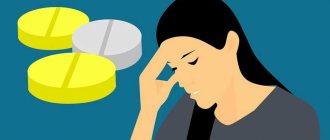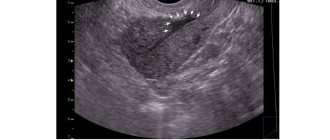VSD is a common set of symptoms that in our time has affected not only adults, but also children. There are many causes for this disease, and therefore each clinical case has its own individual characteristics and many approaches to treatment. A common symptom – surges in blood pressure – also cannot be called constant and unambiguous. Pressure during VSD can either increase or decrease, leaving the diagnosis legitimate. With this disease, it is important to understand that “blood pressure instability” is a symptom that disarms the patient in the face of many life-threatening situations.
Over many years of observing, diagnosing and treating patients, specialists at the Yusupov Hospital have proven their ability to help patients solve their problems, improve their quality of life, and move from “tolerate” to “overcome.” Doctors at the Yusupov Hospital will help determine possible causes and select medications that will help a specific patient and in a specific clinical situation.
Unstable blood pressure as a consequence of a failure of the autonomic system
The ANS is a kind of neural network in the human body. The control center is in the brain. When functioning correctly, it is invisible, but against the backdrop of a failure, it “behaves” quite frighteningly.
The ANS consists of the sympathetic and parasympathetic subsystems. The system is responsible for regulating the activities of all internal organs. The ANS “submits” to the limbic system of the brain. This system is responsible for:
- emotions;
- memory;
- sense of smell.
It must be remembered that during a short-term stressful situation, the ANS mobilizes the body's protective functions. The failure occurs against the background of frequently recurring stress.
The brain does not understand what the body needs - calm by reducing pressure, or stimulating activity by increasing it.
This determines the connection between VSD and low pressure.
How are stress and pressure related?
An increase in pressure from nerves is usually observed in suspicious, anxious individuals. The main reasons why blood pressure increases during stress are presented in the diagram.
Nervous pressure increases while watching news blocks and horror films. For some people, the reason for changes in blood pressure is anxiety about an upcoming event. Students who are very worried before taking an exam are highly susceptible to this.
Changes in blood pressure against the background of surges in atmospheric pressure are observed in older people and people suffering from weather dependence.
High pressure
There is a mutual connection between nervous tension and hypertension. On the one hand, the pathology worsens after suffering stress. On the other hand, increased blood pressure contributes to nervous system disorders and increased stress on the heart.
What is stress? This is a natural reaction of the human body to strong irritants. Stimulation of the sympathetic nervous system leads to the release of:
- cortisol;
- norepinephrine;
- adrenaline.
There is a clear connection between high blood pressure and hangover. With the abuse of alcohol-containing products, withdrawal syndrome occurs. The increase in the normal rate reaches 150/100. This condition may be accompanied by panic attacks, causeless anxiety, and apathy.
Blood pressure also increases due to lack of sleep. This is often observed among people engaged in intellectual work, students, and schoolchildren. Young people know that their blood pressure has increased by the classic symptoms: headaches, lethargy, nausea.
If VSD is not accompanied by symptoms of other diseases, then the stressful situation is leveled out quickly enough, and blood pressure levels return to normal. The health threat is fading.
If the main cause of VSD is hypertension, then vascular tone is constantly disturbed. An increase in pressure is provoked by even the slightest stressor.
Against the background of a sharp jump, a crisis of VSD occurs. It poses a serious threat to the life of a person who has problems with blood vessels.
Low pressure
Vegetovascular dystonia of the hypotonic type is accompanied by a decrease in pulse and vascular pressure. The systolic output of the heart is quite weak, and the tone of the sympathetic nervous system is low.
This is due to the fact that the heart of VSD patients with hypotension, suffering from increased anxiety, pushes blood into the aorta with little force.
Why does pressure drop during exercise? This is due to an inadequate vascular response. In a healthy person, this condition is extremely rare.
Many people note the following manifestations of VSD:
- irritability;
- ear noise;
- dizziness;
- panicky, anxious thoughts;
- weight gain;
- menopause symptoms;
- weakening of the reproductive system.
There is a connection between low blood pressure and hangover. Against the background of abuse of alcohol-containing products, the tone of cerebral vessels weakens. This leads to deterioration of brain nutrition. Quite severe headaches appear, memory deteriorates, and concentration decreases.
A hypotensive person's sleep is disturbed. He is haunted by nightmares and experiences bouts of sleep paralysis. A person cannot completely relax and unwind. In the morning he feels exhausted.
With low blood pressure, gastrointestinal dysfunction is observed. Diarrhea alternates with constipation. Symptoms such as abdominal pain and nausea appear. The person may vomit and have no appetite.
High blood pressure - causes and symptoms
An increase in blood pressure is most often a reaction of the human body to an irritant (stress, hormonal changes, climate change, etc.). The body, in turn, compensatoryly increases the heart rate, causing the heart to work harder and with greater force. But the opposite situation also happens - when high blood pressure is accompanied by a low heart rate. The reason for this is impaired regulation of the cardiovascular system. With low heart rate and high blood pressure, the brain and heart are primarily affected. Disruption of the blood supply to these organs can threaten the patient's life, so he needs immediate examination and treatment.
Over time, pressure surges become more and more common. This affects a person’s well-being. Symptoms that may bother the patient:
- increased heart rate;
- dizziness;
- headaches of different localization;
- chills or fever;
- short-term visual impairment (“spots”).
These symptoms make a person forget about everything and concentrate only on how he feels, thereby aggravating the situation. When measured with a tonometer, the increase in blood pressure can reach extremely high numbers. At the same time, the headache intensifies, the heartbeat quickens, and the fear of death appears. Despite such poor health, these pressure surges do not carry with them serious consequences. In no more than two hours, the crisis will end with increased urination.
In this case, it is very important to differentiate high blood pressure from a hypertensive crisis, which is dangerous to the health and life of the patient and requires urgent therapeutic measures.
Treatment
Pressure surges due to nervousness are a serious reason to visit a doctor. Usually the patient is prescribed a course of complex therapy, the main goal of which is to eliminate hypertension.
How to treat pressure from nerves? In order to improve the patient's condition, he may be prescribed symptomatic therapy. It is carried out simultaneously with psychotherapy sessions and, if necessary, drug treatment.
Instructions for normalizing blood pressure in hypertensive patients are as follows:
- Open the window.
- Lie down.
- Inhale and exhale deeply several times.
- Close your eyes and lie in silence for a while.
- Try to direct your thoughts in a positive direction.
During pregnancy, you can take sedative herbs. Also, with low blood pressure, it is allowed to take sedatives such as Valocordin, peony tincture or valerian.
Treatment of the disease with alcohol tinctures does not require a prescription from a doctor. A single dosage of the product is 40 drops. The heart rate normalizes and vascular spasm decreases within 5-10 minutes.
A pressure bath is beneficial only in the absence of heart disease.
Treatment of manifestations of VSD in Moscow
Medicine has always developed dynamically, and at the moment there is a whole host of effective treatment methods. The specialists of the Yusupov Hospital, using their accumulated knowledge and skills, never cease to absorb new knowledge. There is no panacea for all diseases, but this is not a reason to be alone with your problems. The clinic’s doctors find an individual approach, select the treatment necessary in a particular case, provide comfortable conditions, and help where your body could not cope. Don’t put up with the symptoms - make an appointment by calling the Yusupov Hospital.
Psychotherapy
With strong experiences, not only can blood pressure rise, but all the body’s defense systems begin to sound the alarm, which is trying to “get back into life” again and begin to actively respond to what is happening.
If emotional overstrain is present for a very long time, the “stage of full-blown stress” develops. Nonspecific and specific protective systems begin to activate. In most cases, the duration of this stage is 5-10 minutes. Less often it continues for years.
Next comes the time of the “asthenic stage”. The patient’s body is exhausted, and all sorts of pathologies “fall” on it.
In psychotherapy, there are more than 8 hundred practices that allow you to get a person out of a stressful state. The most effective methods are Gestalt therapy and cognitive behavioral therapy.
Conducting Gestalt therapy
The main task of the specialist is to teach the client how to properly respond to stress. Therapy always takes the form of dialogue, in which the leading role belongs to the patient.
The psychotherapist focuses on the client's feelings and experiences. The main principle of Gestalt therapy is that the therapist refuses a leadership role and does not direct the client to where he could be less nervous.
As treatment progresses, a person learns to understand his life and make the right choices. The patient also learns to notice bodily phenomena provoked by stress. This helps him to more soberly assess his condition and learn to respond correctly to stressors.
Conducting cognitive behavioral therapy
Cognitive behavioral therapy refers to understanding one's own behavior. The psychotherapist's assistance is based on the principles of learning theory. During the course of treatment, the specialist is obliged to convey to the patient the information that all people make mistakes, and there is nothing to worry about.
This type of psychotherapeutic assistance is well suited for suspicious and anxious people who, in addition to the symptoms of VSD, have neuroses.
The principle of the approach implies that fear, which contributes to an increase or decrease in blood pressure, influences a person’s behavior and thinking. Stress is always caused by intrapersonal conflict, which can either lie on the surface or be hidden deep inside.
Psychotherapy in a stressful situation leads to a search for this conflict, actively works with intermediate thoughts, rational attitudes, and “gets to the bottom” of the personal core and system of relationships.
A person learns to understand why stress occurs and how he can change the situation.
The method of such therapy itself is based on the following principles:
- Realize the real problem.
- Form an alternative, build the right relationships.
- Consolidate the results in practice.
Following the recommendations of a specialist, a person begins to correctly evaluate his behavior and transform it.
Low blood pressure - causes and symptoms
Low blood pressure is also a complication of VSD, causing no less trouble for patients. The patient's body reacts to irritating factors by dilating peripheral vessels, and inhibition dominates in the central nervous system. Patients justify low blood pressure for themselves with all sorts of secondary reasons, without noticing other symptoms.
The most common symptoms of low blood pressure are:
- excessive weakness;
- pathological fatigue;
- increased drowsiness, light sleep itself, frequent nightmares;
- dizziness to the point of fainting;
- impairment of cognitive functions (memory, attention, concentration).
Physical exercise and VSD
Blood pressure levels are normalized when a person plays sports or performs any physical work. The main thing here is not to overdo it - disproportionate loads are no less harmful to the body than their absence.
If a person wakes up and feels good, then it is recommended to start the day with a short exercise or jogging. This helps to “release” accumulated negative emotions and eliminate the stress factor.
Heart rhythm disturbances are eliminated with evening walks. The duration of 1 walk should be 30-60 minutes. This helps to normalize the condition of blood vessels during vegetative-vascular dystonia. The body is saturated with oxygen, shortness of breath decreases, and blood pressure normalizes. Evening walks are an excellent prevention of stressful conditions.
If pressure surges are constant, the patient is recommended to perform breathing exercises. Regular exercise helps improve vascular health and reduce the risk of developing hypertension.
If pressure surges are accompanied by constant dry mouth, a person is recommended to alternate periods of activity with passive rest. It is advisable to sleep more; you can allow yourself to lie on the sofa in front of the TV, watching a good comedy or light melodrama. This approach helps to get rid of irritability and reduce nervous excitability.
The following types of physical activity have a beneficial effect on the nervous system:
- yoga;
- swimming;
- a ride on the bicycle;
- skating;
- Norwegian walking;
- longboarding.
A person whose life includes these sports has good stress resistance.
A bath with high blood pressure is strictly contraindicated. Hypotonic patients should discuss visiting baths and saunas individually with their doctor.
What will help with blood pressure with VSD?
Not every patient with vegetative-vascular dystonia needs blood pressure-lowering medications. If such medications are prescribed, then most likely only to relieve an attack, and only in cases where the tonometer readings are really high.
Patients with VSD who suffer from pressure changes should follow a gentle work regimen, not be overloaded emotionally, and limit the amount of alcohol.
Regular intake of the amino acid glycine will help reduce the excitability of the sympathoadrenal system. But in order to gradually establish normal regulation of all autonomic functions and prevent further pressure surges, it is necessary to take glycine in combination with cystine and glutamic acid. The most effective for VSD in this case will be the complex Eltacin® (glycine + cystine + glutamic acid) and Glycine. Both of these drugs will gradually eliminate the very cause of pressure changes in people with dystonia, and not just temporarily relieve symptoms.
Folk remedies
If pressure occurs against the background of a particular disease, then independent normalization of it using folk methods is unacceptable. It is not advisable to use “grandmother therapy” methods during pregnancy.
What should healthy people take for high blood pressure? According to doctors, they should pay attention to valerian root and other herbs that have a sedative effect.
Benefits of hawthorn
Does hawthorn affect blood pressure? This plant has a very powerful effect. It is often used in the treatment of many serious diseases.
If your blood pressure changes frequently, doctors recommend using the fruits of a medicinal plant. Hawthorn leaves and flowers are used much less frequently in the treatment of hypertension.
The combination of “hawthorn and blood pressure” is especially important for heart diseases. Berries help strengthen and normalize the functioning of the heart muscles. Hawthorn extract is found in many medicines.
The benefits of this plant are as follows:
- improvement of the nervous system;
- normalization of blood circulation;
- relief of headaches even if they are caused by cervical osteochondrosis.
The use of hawthorn depends on the general condition of the person, as well as the week of pregnancy.
If you do not follow your doctor's recommendations, side effects may occur. The most harmless of them is an upset stomach, the most serious is a slow heart rate.
How is hawthorn used?
Hawthorn tea is very useful. You can cook it yourself. To do this you need:
- Combine 20 fresh berries with 1000 ml of boiling liquid.
- Leave the product for 9 hours.
- Pass through gauze.
It is advisable to drink the drink warm. If your blood pressure is low, you can drink some hot and sweetened hawthorn tea.
An infusion is prepared from the dried berries of the plant. The cooking process is the same. The daily dose of infusion is ½ glass, 3 times/24 hours.
To treat hypertension, it is allowed to add 1-2 tablespoons of vodka to the infusion. The daily norm is 1/3 cup, 2 times/24 hours.
VSD or hypertension?
Sometimes it is difficult to distinguish hypertension from other conditions that are accompanied by increased blood pressure. Therefore, it is important to conduct an examination using hardware and laboratory methods. With hypertension (hypertension), in addition to high blood pressure, characteristic changes will be visible on the cardiogram, thickening of the walls of the left ventricle during ultrasound of the heart, and an increase in the number of red blood cells in the blood during its analysis.
Changes in the condition of internal organs will also occur with hypertension associated with diseases of the thyroid gland, adrenal glands, pituitary gland, heart, and kidneys. Also, some medications can cause persistent or periodic increases in blood pressure.
Increased pressure in vegetative-vascular dystonia is not associated with pathology of internal organs. But without proper treatment, prerequisites for changes in blood vessels and heart may appear. With VSD, the pressure does not rise to alarming levels, but even with an increase of 10 mmHg from normal, the patient’s condition can significantly deteriorate. Patients with true hypertension often do not notice high blood pressure, so they need to monitor their blood pressure three times a day.
Drug therapy
How to treat pain due to tachycardia? “Heart patients” are prescribed to take not only sedatives, but also other medications that have a strong effect.
| How to treat the heart? | Description |
| Alpha blockers. | Medicines in this group help reduce the volume of circulating blood and the load on the heart. |
| Beta blockers. | The drugs block the conduction of nerve impulses from receptors. This helps slow the heart rate. |
| Calcium channel blockers. | Medicines in this group prevent calcium from entering the cell. |
| Diuretics. | The drugs quickly remove excess fluid from the body, as well as sand and stones. |
| ACE inhibitors | Medicines in this group help reduce the vascular reaction. |
| Medicines with a central mechanism of action. | They accompany the elimination of vascular spasm. |
Timely drug therapy helps reduce the risk of death and significantly improve the patient’s quality of life.
Preventive actions
An incorrect assessment of the danger of arterial hypertension causes many people to refuse blood pressure control. Some patients become so accustomed to systematic surges in blood pressure observed due to stress that they refuse medical help.
According to doctors, people at risk need to regularly measure blood pressure and record the indicators.
The second important preventive requirement is a radical change in lifestyle.
Easily excitable persons must undergo a course of psychotherapy. This will help them learn to avoid stressful situations and behave correctly during conflict.
The third most important preventive requirement is changing your diet.
The diet should contain the following fruits and vegetables:
- Green apples.
- Spinach.
- Pumpkin.
- Oranges.
- Tangerines.
- Grapefruits.
- Lemons.
- Watermelons.
- Melons.
- Strawberries.
- Broccoli.
- Tomatoes.
These foods contain large amounts of potassium, which quickly removes excess water and sodium from the body. Against this background, the risk of developing hypertension is reduced.
You can drink tea and coffee, but you should not abuse these drinks. If possible, they should be replaced with sodium-free mineral water, fruit drinks, compotes, and freshly squeezed vegetable and fruit juices.









